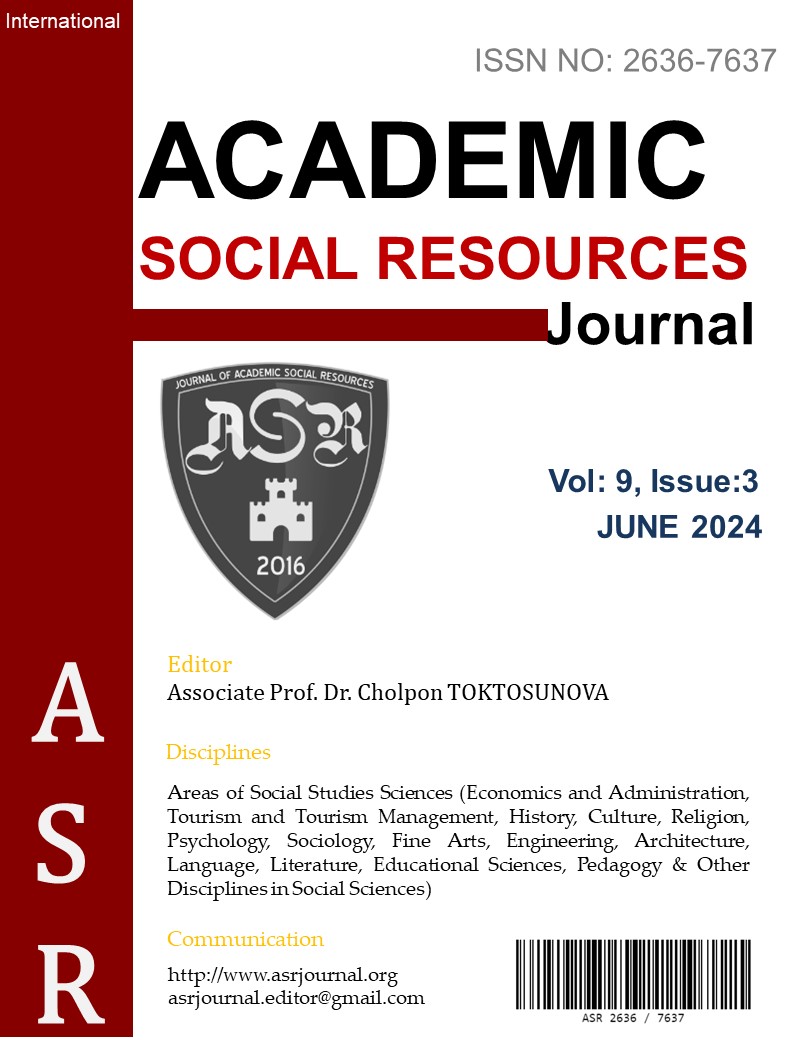Adana Bölge Müzesi’ndeki Mozaiklerde Balık Tutan-Mitolojide Aşk Tanrısı- Eros=Cupido(n)’nun Düşündürdükleri
Author :
Abstract
Mitolojide aşk, şehvet tanrısı olarak bilinen, Yunan Mitolojisindeki adıyla Eros, Roma Mitolojisindeki adıyla Cupido(n), resim, heykellerde, genelde elindeki okları ve yayı ile çevreye aşk dağıtan, muzip, tombul, şirin, çıplak bir erkek çocuk olarak betimlenmiştir. Eros=Cupido(n), insanları birbirlerine aşık ettiği gibi tanrılar aleminde de bu gücünü kullanabilmektedir. Roma dönemindeki adıyla Kilikya Pedias olan Çukurova’da ortaya çıkarılan ve genelde M. S. 3. yüzyıla tarihlenen taban mozaiklerinde Eros=Cupido(n), çeşitli şekillerde balık tutan ve hayat döngüsü içinde giderek yaşlanan çıplak erkek olarak tasvir edilmiştir. Çoğunlukla, tanrıça Tethys ile resmedilmiştir. Mozaiklerde geçen tasvirlerin anlamları ve öyküleri merak edilmektedir. Bölge insanı tarafından bu tasvirler çeşitli şekillerde efsaneleştirilmiştir. Bundan başka- mozaiklerdeki Tethys ve sembolik olarak bulunan eşi Oceanus’tan dolayı- mozaik alanlarının deniz ile ilişkilendirilme çabaları da görülmektedir. Bu araştırmadaki amaçlar; mozaiklerde resmedilmiş tasvirlerin genel anlamlarını ve mozaik tablolarının bir bütün olarak ne anlatmak istediklerini, özellikle aşk tanrısı Eros=Cupido(n)’nun neden balık tuttuğunu, balık tutarken yaşlanmasının ne anlama geldiğini, Tarih ve Felsefe bilimi çerçevesinde ortaya çıkarmaktır. Ayrıca özellikle Adana Bölge Müzesi’nde bulunan mozaiklerin, ortaya çıkarıldıkları coğrafi mekân üzerinden, Eros=Cupido(n)’nun yine Tarih ve Felsefe bilimi çerçevesinde, deniz veya su ile ilişkisine de anlam kazandırarak, mozaik tablolardaki öyküleri gerçeğe en yakın şekliyle kamuoyuna sunmaktır. Böylece mozaiklerdeki tabloların öyküleri, vermek istedikleri mesajlar, bölgeyi ziyaret edenler tarafından doğruya en yakın şekliyle öğrenileceğinden dolayı insanların ilgisi artacak ve bölge turizmine de katkı sağlanacaktır. Bunun için Eros=Cupido(n), Tethys, Oceanus, Ketos, Nyphe’ler (su perileri), balık sembollerinin mitolojik, felsefi, psikolojik olarak ne manâya geldiklerini görmek maksadıyla literatür taraması yapılmıştır. Mozaikler incelenmiş, mozaik tablolarındaki simgeler gözlemlenmiştir.
Keywords
Abstract
Known as the god of love and lust in mythology, Eros in Greek Mythology and Cupido in Roman Mythology, he is depicted in paintings and sculptures as a mischievous, chubby, cute, naked boy who spreads love around with his bow and arrows in his hand. Eros Cupido(n) can use this power in the world of gods as well as making people fall in love with each other. In the floor mosaics unearthed in Çukurova, known as Cilicia Pedias in the Roman period, and generally dated to the 3rd century AD, Cupid(n) is depicted as a naked man fishing in various ways and gradually aging in his life cycle. She is often depicted with the goddess Tethys. People are curious about the meanings and stories of the depictions in the mosaics. These depictions have been legendaryized in various ways by the people of the region. Moreover, due to Tethys and her symbolic spouse Oceanus in the mosaics, there are also efforts to associate the mosaic areas with the sea. The aims of this research are to reveal the general meanings of the depictions depicted in the mosaics and what the mosaic paintings mean as a whole, especially why Cupid, the god of love, fishes and what it means to grow old while fishing, within the framework of History and Philosophy science. In addition, it is to present the stories in the mosaic paintings to the public in a form closest to reality, by giving meaning to the relationship of Cupid(n) with the sea or water, within the framework of the science of History and Philosophy, especially through the geographical location where the mosaics in the Adana Regional Museum were unearthed. Thus, as the stories of the paintings in the mosaics and the messages they want to convey will be learned in the most accurate form by those who visit the region, people's interest will increase and a contribution to regional tourism will be made. For this purpose, a literature review was conducted to see what the symbols of Cupido(n), Tethys, Oceanus, Ketos, Nyphes (water nymphs) and fish mean mythologically, philosophically and psychologically. Mosaics were examined and the symbols on the mosaic paintings were observed.





